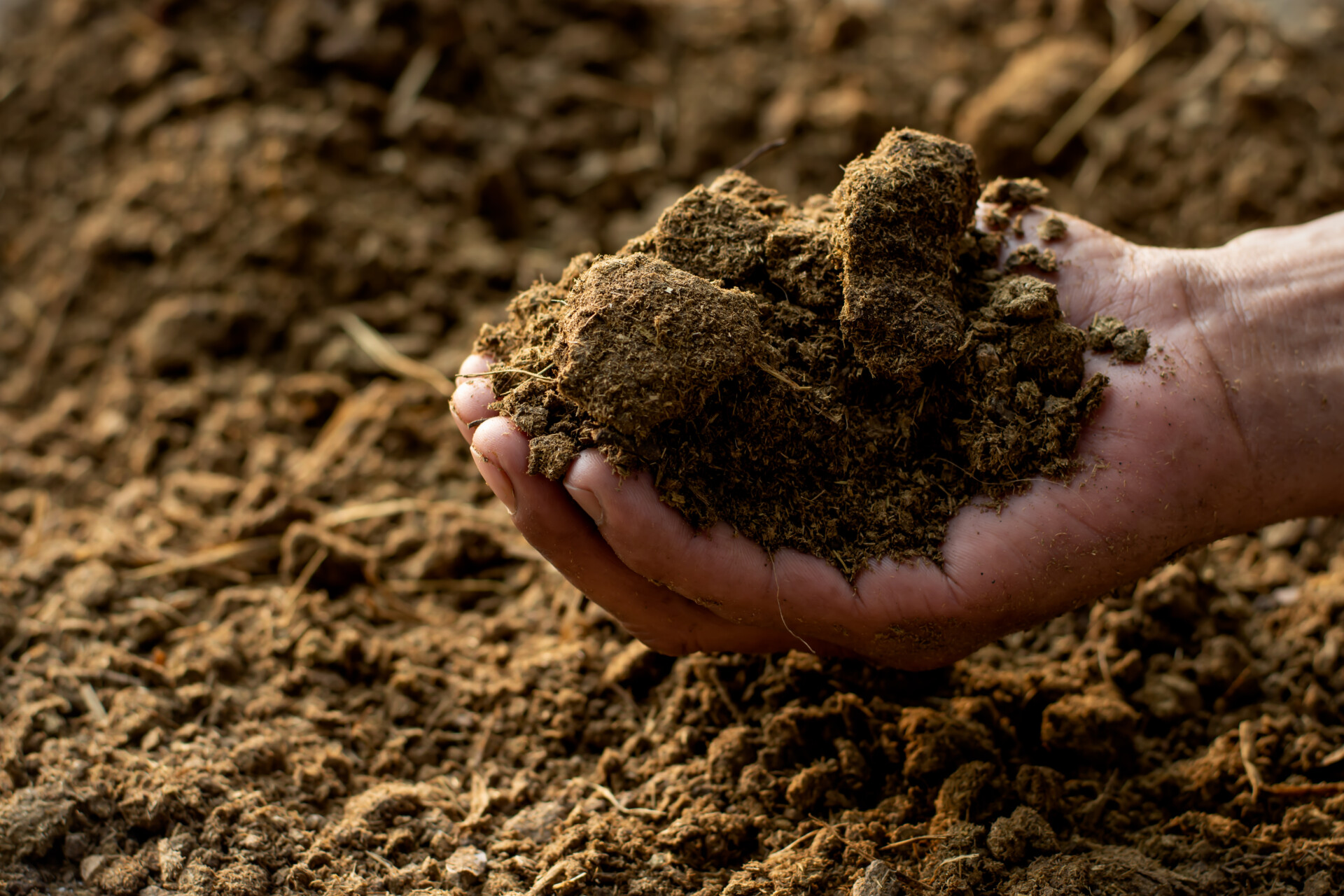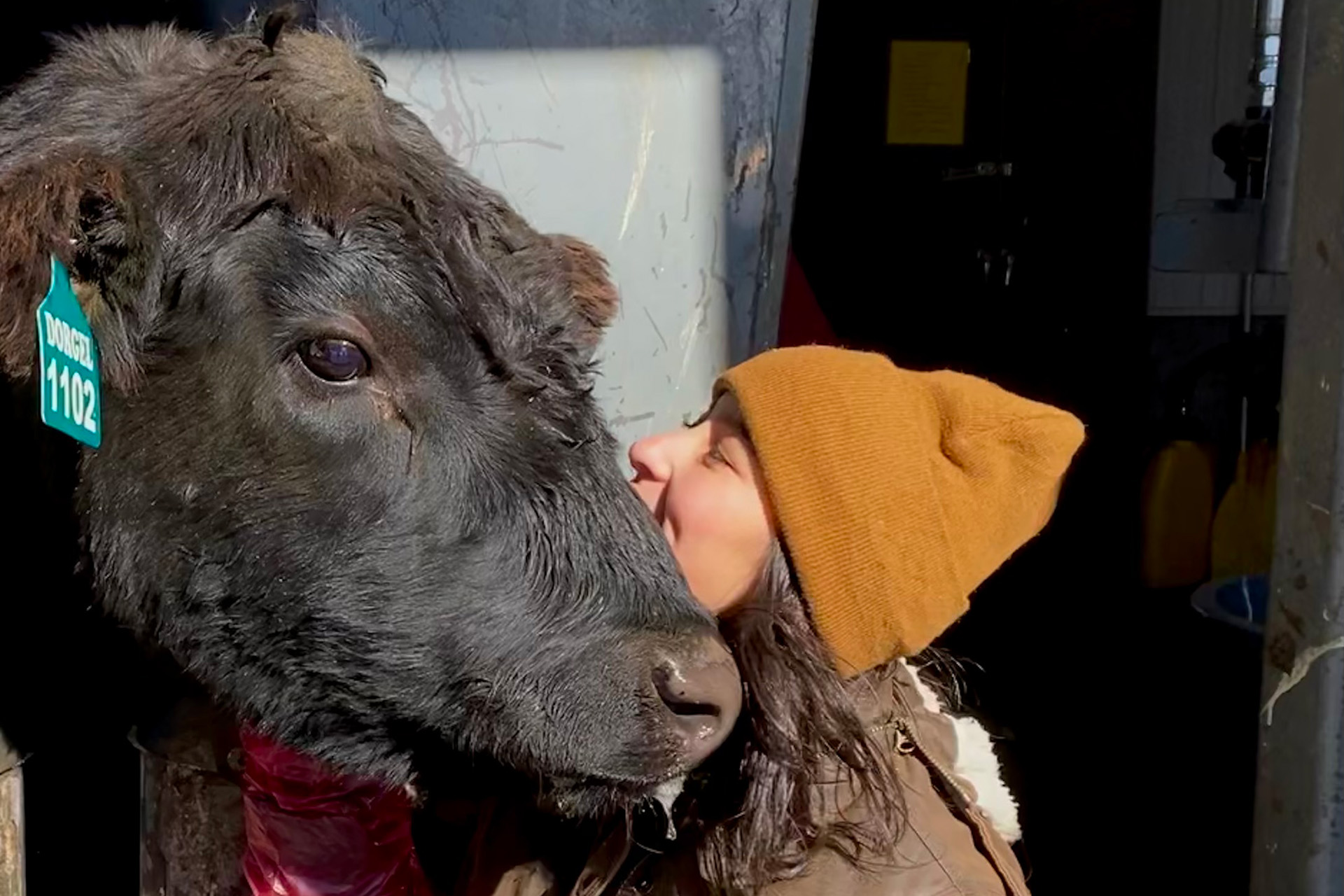
Managing manure
How a CSU student’s invention could improve the No. 2 problem in stockyards for humans, animals and the planet
story by Stacy Nick
published Sept. 28, 2023

During her first year at Colorado State University, Valeria Quintero-Segura went on a tour of CSU’s Agricultural Research and Development Center (ARDEC) and noticed a particular problem: poop.
“They were cleaning the pens, and I asked about what goes into that,” said Quintero-Segura, who is studying animal sciences in the College of Agricultural Sciences, and minoring in agricultural business and global environmental sustainability.
The answer is a lot. Heavy machinery is used to clean out much of the manure. Then the pen is manually cleaned, shoveling the rest of the manure into buckets. Then all the manure is transported to a manure pile or lagoon until it can be applied to cropland to improve soil quality.
Meanwhile, nutrients — along with ammonia and methane emissions — are leaching into the environment, she said. Not to mention that the animals are standing in their own feces at least part of the time, which can lead to many other problems, including hoof abscesses, injury and general discomfort.
Quintero-Segura knew there had to be a better way. Now in her junior year, she’s working to patent her design that would train cattle to defecate in one location.
“It’s in the early stages,” she said. “Right now, I’m working on research behavior to see if my design can work by testing if the cattle have voluntary control of their rectal sphincter.”
If her hypothesis proves correct, her invention — details of which she and her attorney are keeping understandably close to the vest — would work as a manure collection system.
The benefits would be manyfold, Quintero-Segura said. It would reduce the amount of human labor involved in the cleanup process, along with fossil fuel emissions from heavy machinery. It would also help prevent animal injury and discomfort, while improving animal welfare in general.
Because it would be a closed system, the methane and biogases would be contained and then could be used for cooking gas or in sustainable energy systems, she said.
Quintero-Segura spoke with SOURCE about how she sees the future of agriculture.
What got you interested in pursuing a career in agriculture?
Ultimately, I want to be a veterinarian specializing in large animal medicine. I don’t really think you can do that well or responsibly without truly understanding the industry and the systems that go along with it.
What impact do you hope to have?
To improve animal welfare and food systems. I also want to improve sustainability in agriculture and hopefully reduce the cost of production for those in the industry. It’s a matter of finding sustainable ideas that are also profitable because producers can’t implement things that they can’t afford. I actually just started a club specifically focused on all of these things.
Tell me a little more about your club.
It’s brand new and called the Sustainable Food Production and Animal Welfare Club. There’s a lot of research being done on how agriculture is impacting the environment, but there’s not as much actually being implemented. We have so many cool ideas and new inventions, but none of them are being put into practice. So, the idea behind the club is to teach the public about these cool new ideas and show them how they can be implemented.
“We’re trying to create urban food forests on campus to not only improve the biodiversity within just the campus itself, but also hopefully provide food options.”
— Quintero-Segura, CSU student
For example, we’re trying to create urban food forests on campus to not only improve the biodiversity within just the campus itself, but also hopefully provide food options. Also, at ARDEC we’re working to use the manure there to start a composting project that we would be able to use to compost the food forests.
What are the most pressing challenges you see in agriculture?
Again, there are so many awesome and functional inventions that have been made to combat climate change within the agricultural industry. But there’s just not either enough infrastructure or money to put those systems into place.
What makes you feel hopeful about the future of agriculture?

I feel hopeful about agriculture’s future because people are becoming more conscious about where their food comes from. We’ve been disconnected from the system, and we’re starting to see the consequences of that. It’s affecting our climate. It’s affecting our health. Now, people are working to be more conscious about it and more people want to work on it.
Read more of The Future of Ag is Now
This special report from SOURCE explores the breadth of multidisciplinary, agricultural work happening at CSU — a place where researchers, students and food producers are all collaborating to shape the future of agriculture.